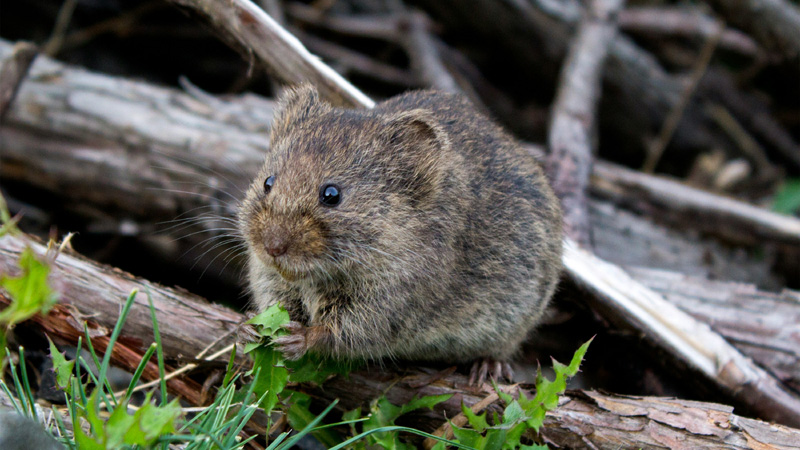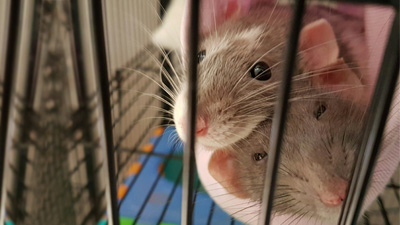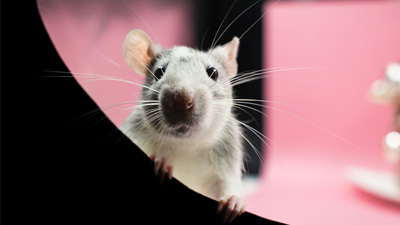Wild Rats vs. Pet Rats: What Is the Difference?

Photo by Ryan Stone on Unsplash
Rats are often associated with negative connotations - dirty, disease-ridden creatures scurrying through sewers and garbage. However, it is important to distinguish between the wild rats commonly found in urban areas and their domesticated counterparts, known as pet rats or fancy rats.
In this article, we will explore the key differences between wild rats and pet rats, including their characteristics, behavior, and impact on humans and the environment.
Origins and Characteristics
Wild rats, primarily the Norway rat (Rattus norvegicus) and the black rat (Rattus rattus), originated in Asia and spread across the world as a result of human activities. These rats are well-adapted to urban environments and are known as successful scavengers and opportunistic feeders.
Pet rats, on the other hand, are descendants of wild rats that have been selectively bred for specific traits, resulting in a wide variety of colors and coat patterns. Known as fancy rats, they have become popular companion animals due to their friendly nature, intelligence, and adaptability to living with humans.
Physical Differences
One of the most evident differences between wild rats and pet rats is their physical appearance. Wild rats generally have a larger, stockier build compared to pet rats. They have coarse fur that is usually brown or black in color, allowing for better camouflage in their natural habitat.
Pet rats, on the other hand, come in a wide array of colors and coat patterns, including solid colors, patches, and agouti (banded) patterns. They have been selectively bred to exhibit unique and appealing variations in their physical appearances.
Behavior and Temperament
Wild rats are primarily nocturnal and exhibit highly adaptive behavior. They are known to be excellent climbers and swimmers, allowing them to access various food sources and habitats. These rats are wary of humans and tend to avoid direct contact whenever possible.
Pet rats, on the other hand, have been domesticated for generations and have developed a friendlier and more sociable temperament. They are diurnal, which means they are active during the day and sleep at night, allowing for more interaction and playtime with their owners. Pet rats have a natural curiosity and enjoy exploring their environment. They form strong bonds with their human companions and thrive on social interaction.
Lifespan
Wild rats typically have shorter lifespans due to various factors such as predation, exposure to diseases, and harsh living conditions. On average, they live for about 1 to 2 years in the wild.
Pet rats, with proper care and a suitable environment, generally have longer lifespans. They typically live for about 2 to 4 years, although some individuals have been known to live beyond 5 years or even longer with exceptional care.
Environmental Impact
Wild rats have a significant impact on the environment, often classified as pests due to their ability to damage crops, contaminate food sources, and spread diseases. They can cause structural damage by gnawing on wires, pipes, and wooden structures. In some cases, they may also compete with native wildlife for resources.
Pet rats, on the other hand, have minimal impact on the environment as they are kept in controlled indoor settings. With appropriate care, their impact is limited to the resources required for their care, such as food, bedding, and cage materials.
Health Risks
Wild rats are associated with various health risks. They can transmit diseases to humans and other animals through their urine, feces, and bites. Some of the diseases transmitted by wild rats include leptospirosis, hantavirus, and rat-bite fever.
Pet rats, when obtained from reputable breeders and given proper veterinary care, pose minimal health risks to humans. Domestication and selective breeding have significantly reduced the likelihood of disease transmission. However, it is still important for pet rat owners to practice good hygiene, such as regular handwashing, to minimize any potential risks.
Legal Considerations
In many areas, it is legal to keep pet rats as companion animals without any specific permits or regulations. However, the legal status of pet rats may vary depending on the region. It is important for prospective pet rat owners to familiarize themselves with the local laws and regulations regarding pet ownership.
Conclusion
While wild rats and pet rats share a common ancestry, they are distinct in terms of their characteristics, behavior, and impact on humans and the environment. Pet rats, or fancy rats, have been selectively bred for their friendly temperament and make wonderful companions for individuals of all ages. With their sociable nature, intelligence, and adaptability to human environments, pet rats offer a unique and rewarding pet-owning experience.
In contrast, wild rats have adapted to their natural habitat and exhibit behaviors necessary for survival in urban environments. While they provide valuable ecological roles, they can also pose health risks and cause damage to property and crops.
By understanding the distinctions between wild and pet rats, we can gain a greater appreciation for these fascinating creatures and the unique roles they play in our lives.
You May Also Like
 Pet RatsWhich Are Better Pets: Male or Female Rats?
Pet RatsWhich Are Better Pets: Male or Female Rats? Pet RatsExploring The 4 Largest Pet Rat Breeds
Pet RatsExploring The 4 Largest Pet Rat Breeds Pet RatsWhat is the Best Number of Rats to Have as a Pet?
Pet RatsWhat is the Best Number of Rats to Have as a Pet? Pet RatsExploring the 7 Different Types of Pet Rats
Pet RatsExploring the 7 Different Types of Pet Rats Pet RatsHow Long Do Pet Rats Live? Explore Their Journey
Pet RatsHow Long Do Pet Rats Live? Explore Their Journey Help & AdviceExploring 10 Easiest Exotic Pets to Take Care Of
Help & AdviceExploring 10 Easiest Exotic Pets to Take Care Of